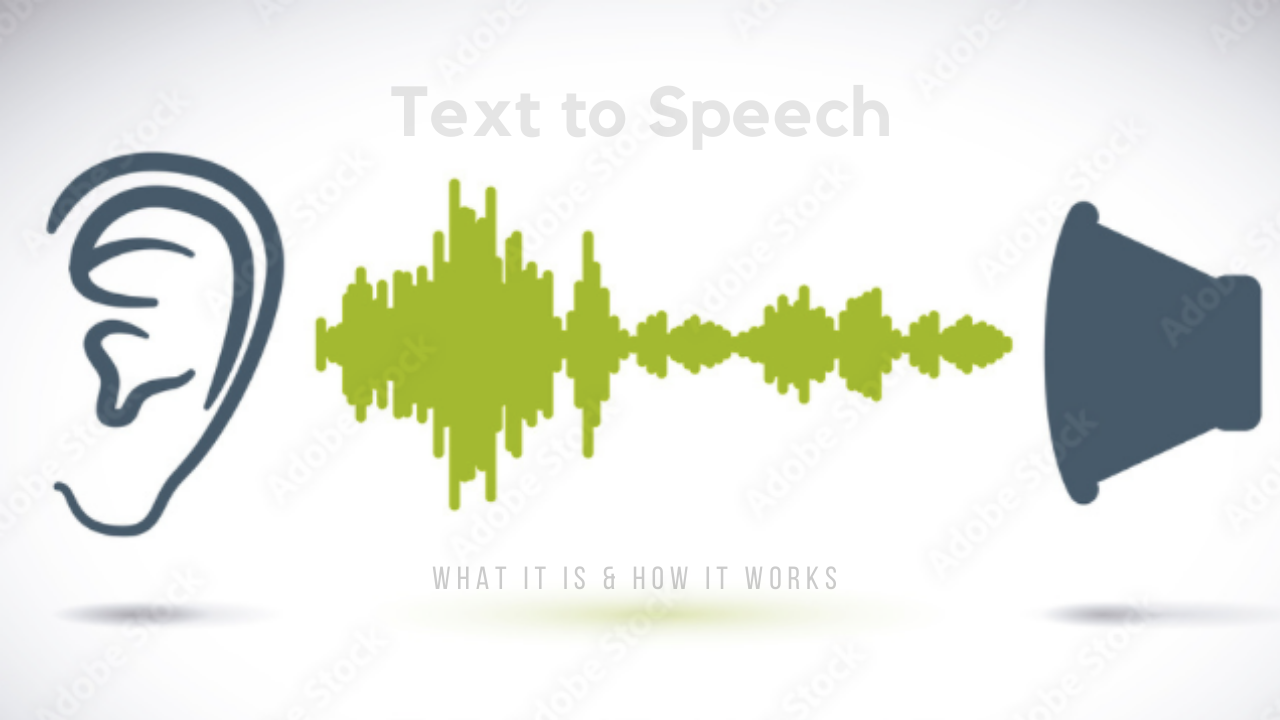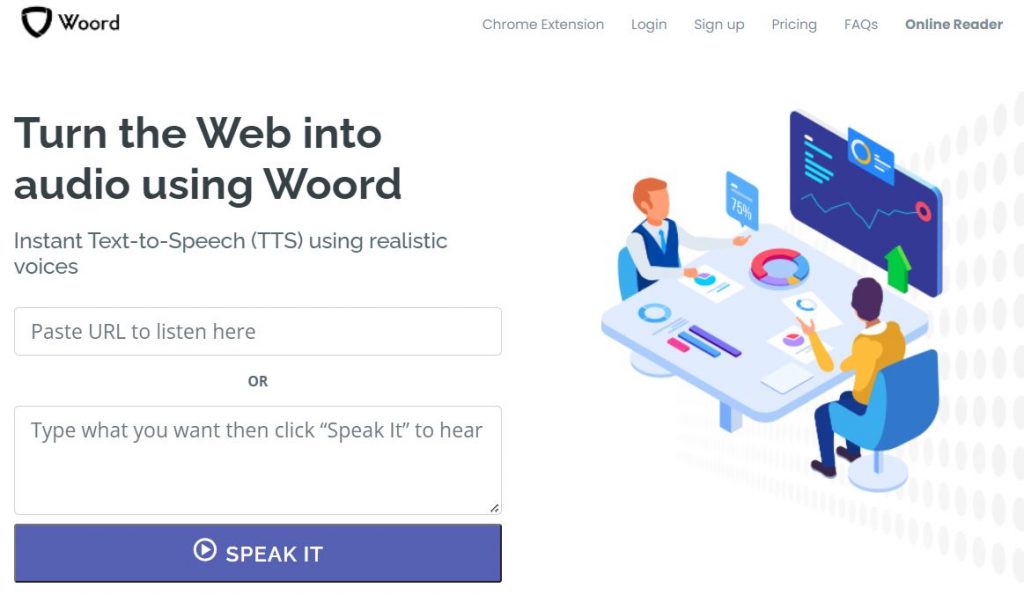What’s text-to-speech technology? How does it work? Is it a useful tool for society? Let’s find it out, shall we?
Text to speech, also known as TTS, is an assistive technology created to aid individuals with visual and reading difficulties and disabilities. For that matter, these gadgets convert text into human utterance. As a result, people can listen to different types of content –websites, blog posts, research papers, books, etc.– in the form of audio.
Within seconds, TTS programmes analyse any text you ask to hear, restructure it into a phonetic system, and then read the material aloud. They examine each word, determine its pronunciation (some softwares are better than others), and pronounce it in context. Text-to-speech applications currently exist in multiple languages and use the target language’s phonological structure. So, you only have to select the pronunciation by adjusting the phonological “spelling” to the appropriate system.

Due to its origin, many will probably ignore that TTS tools have expanded their usage to all people. But don’t we utilise GPS instruments? Or smart speakers and Smarthomes? That’s not all, though. These assets allow individuals to multitask and improve productivity, add a computer-generated voice to their podcasts or audiovisual projects, and save time and money regarding marketing purposes, to name a few.
Therefore, speech synthesis (or the artificial production of human speech) is a practical device for everyday life that benefits people of diverse ages, abilities and activities. Thus, we think it’s important to leave our readers with a text to speech software that enfolds all the characteristics to get the best out of this technology.
Woord
Woord‘s AI voice generator produces excellent human-like speech. Its 50 male, female, and gender-neutral speakers may communicate in a variety of languages and accents, including English, Spanish, Portuguese, French, German, Russian, Turkish, Hindi, Italian, Japanese, Chinese, Vietnamese, Arabic, Dutch, Norwegian, Korean, Polish, Swedish, and many other tongues.
Woord also allows you to keep customising your spokespeople. Actually, it takes voice personalisation to the next level. To begin with, the platform, like other TTS programmes, enables you to alter the audio’s rate, allowing you to speed it up or slow it down. It even includes an SSML editor that lets you manage the tone by emphasising or whispering, inserting pauses and breaths, and tweaking the phonemes to your liking, among other things. However, sophisticated audio settings permit users to choose their preferred device profile for their mouthpieces (e.g., IVR, Smarthome and GPS).
All in all, Woord is a cutting-edge, feature-rich software. Besides the mentioned functionalities, it incorporates OCR technology, MP3 download, a Chrome plugin and more. In a completely free bundle! Getting access to this plan only requires an account. Once you sign up, you receive 20,000 characters and two audios to use as you wish on regular text, pdf, txt, doc(x), pages, odt, ppt(x), ods, non-DRM epub, jpg, and png.
Do you think you better understand TTS interfaces after reading the information above? Or are you considering incorporating them into your daily life? Let us know in the comments!


